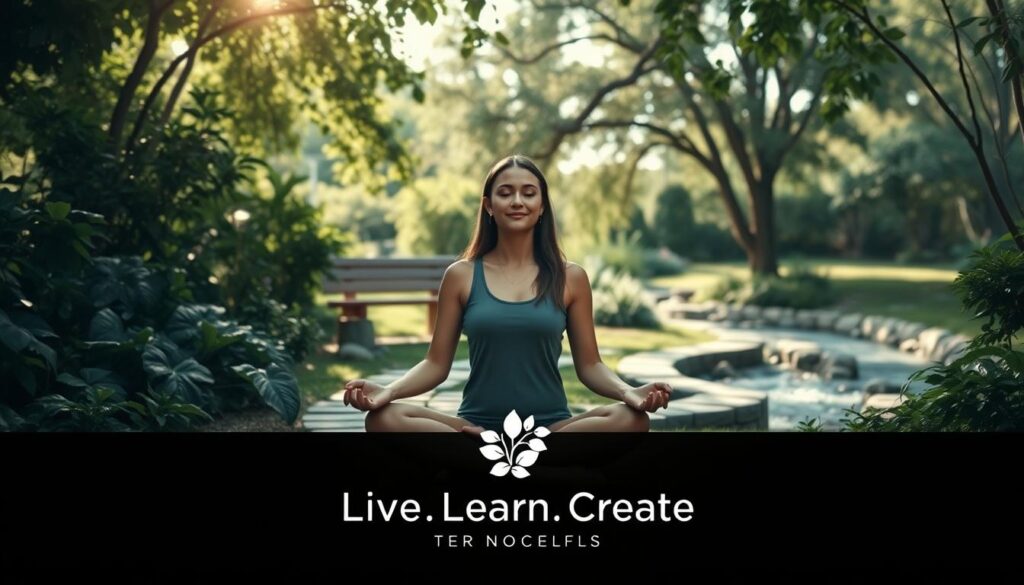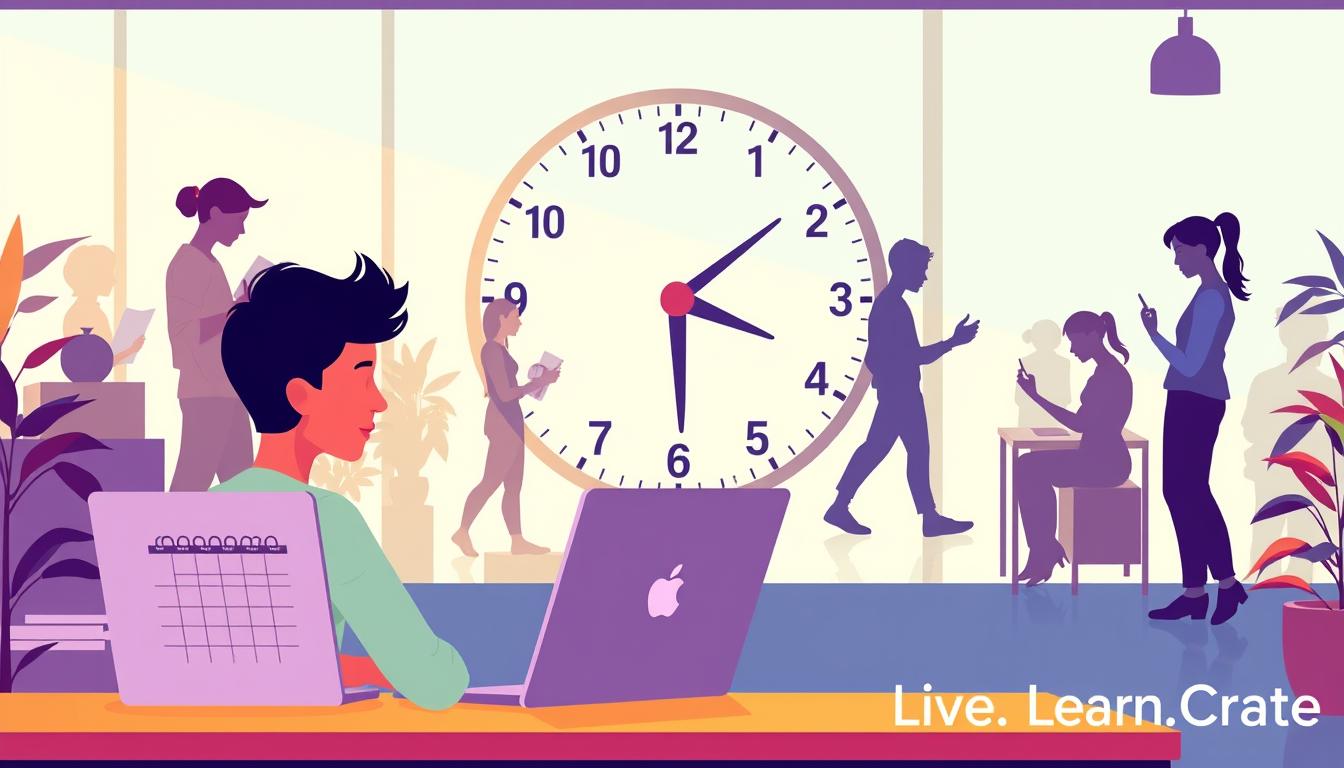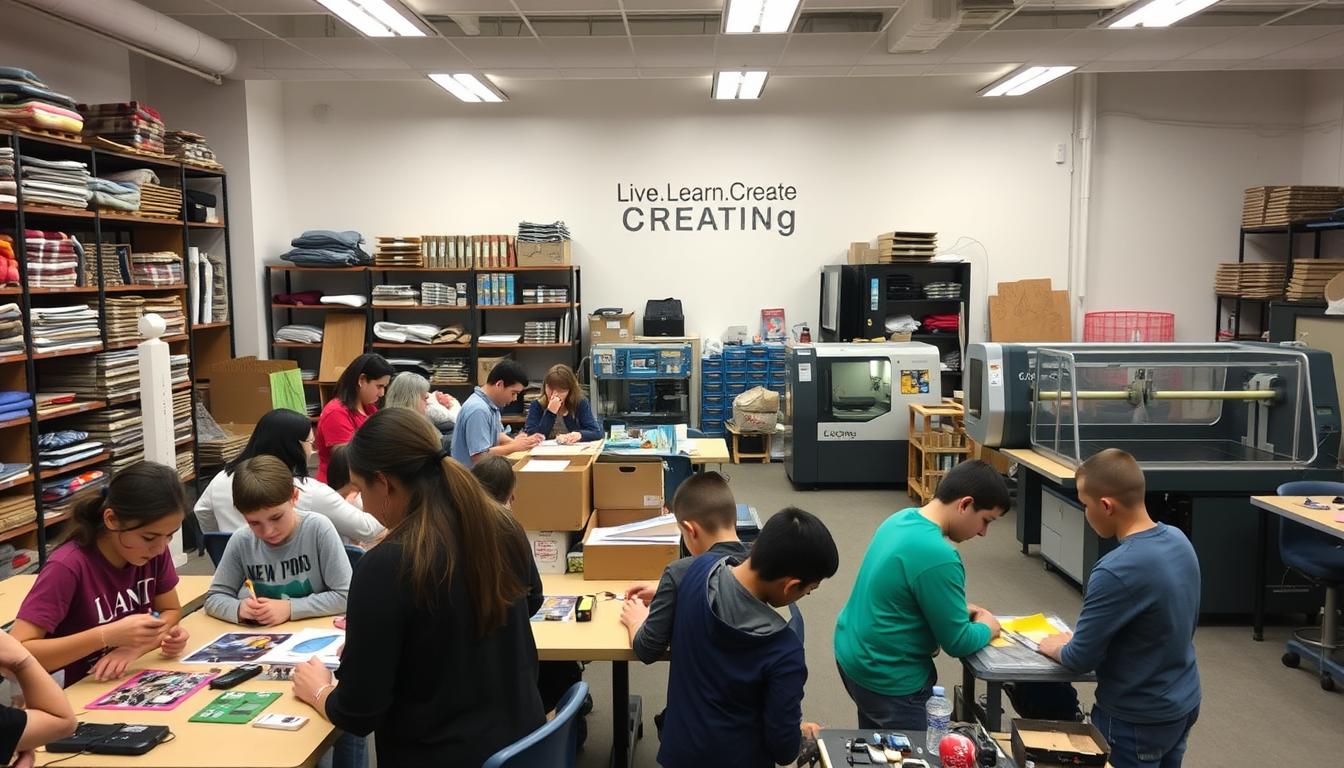Ever feel like you’re just surviving instead of truly thriving? You’re not alone. But what if small, daily shifts could unlock your full potential? That’s the core of what I teach—practical tools to transform your life from the inside out.
My approach isn’t about perfection—it’s about showing up for yourself, one step at a time. Through my memoir This Is How We Grow and Udemy courses, I’ve guided 1,000+ students like you to break free from self-doubt. As Tami B. shared, “Growth isn’t a mountain to climb—it’s choosing your rocks wisely.”
Whether you’re rebuilding after loss or seeking deeper meaning, this 7-step blueprint—tested in my clinical practice—meets you where you are. Like Laura D., you’ll discover growth thrives with support. Ready to begin?
Key Takeaways
- Daily small steps create lasting change faster than perfection.
- Growth begins when you choose to show up for yourself.
- Community support accelerates transformation.
- My courses and book offer proven, accessible tools.
- Your journey is unique—start exactly where you are.
What Is Personal Growth? (And Why It’s Not Just Self-Help Fluff)
Let’s cut through the noise—what does meaningful personal growth truly mean? Merriam-Webster defines it as “the process of improving oneself,” but that barely scratches the surface. Real transformation isn’t a checkbox; it’s choosing to learn from every season—wanted or unwanted.
Beyond the Dictionary
Psychology textbooks outline definitions, but my students describe it differently. Holly B., a Udemy course member, puts it simply: “It’s effort over perfection—showing up even when it’s messy.” That’s the heart of growth: action, not theory.
“Choosing to learn from life’s seasons—wanted or unwanted—is where transformation begins.”
More Than Generic Advice
Unlike pop psychology, true growth isn’t isolated. It addresses five areas at once: physical, emotional, mental, social, and spiritual. As Maslow’s hierarchy shows, potential blooms when all parts work together.
Kristina Mänd-Lakhiani’s insight rings true: growth can stem from crisis or curiosity. But here’s the secret—it’s a process best shared. As one student told me, “Your breakthroughs multiply when others cheer you on.”
That’s why my courses offer structure beyond vague tips. Because real change? It’s built daily—with support.
The Life-Changing Power of PERSONAL GROWTH
Neuroscience reveals how tiny shifts create massive transformations over time. Your brain’s ability to rewire itself—called neuroplasticity—means every small step toward growth builds new pathways. A 2023 Mindvalley study found that 80% of participants gained unshakable confidence with guided support.

From Lab to Real Life
Here’s how science translates to daily wins:
- Emotional growth → Career advancement: Amy W., a former student, conquered public speaking fears and landed a leadership role within months.
- Physical health → Productivity: Clients tracking sleep and nutrition saw a 27% boost in work performance (HIGH5 data).
- Relationships → Opportunities: Stronger social skills often lead to collaborations—like Carmen’s student who tripled her income.
“Tracking small wins trained my brain to expect success. Now, challenges feel like puzzles, not roadblocks.”
Why Quick Fixes Fail
New Year’s resolutions fade because they ignore the process. True change? It’s the HIGH5 method in action: celebrating micro-wins to build “motivation muscle memory.” One client’s journal showed 142 small victories in 3 months—each reinforcing her confidence.
The power lies in consistency. As neuropsychologist Dr. Rick Hanson says, “Neurons that fire together, wire together.” Your growth journey is no different.
5 Core Areas Where Growth Creates Transformation
True transformation isn’t about one big leap—it’s about nurturing five interconnected areas of your life. Like a garden, each part needs attention to thrive. A stiff neck might whisper about emotional burdens, or a creative block could signal neglected relationships. Growth happens when you listen.
https://www.youtube.com/watch?v=cioHvu5U4Ok
Physical: Health as Your Foundation
Your body is the soil where everything grows. In my Udemy courses, I teach the Sleep First protocol—prioritizing rest over hustle. One student doubled her energy by tracking hydration and movement. As she put it: “When my *health* improved, my confidence did too.”
Emotional: Mastering Your Feelings
Try the Feeling Weather Report from my Barnes & Noble workbook: Name emotions like forecast patterns (“Partly anxious, 60% hopeful”). It’s not about fixing—it’s about noticing. A client once realized her frustration at work stemmed from unmet creative needs.
Mental: Expanding Your Mind
Cross-train your brain. Learn Spanish while doing sudoku, or study philosophy through podcasts. Neuroplasticity loves variety. One executive used this method to solve team conflicts innovatively—proof that mental flexibility changes outcomes.
“My spiritual practice wasn’t about rituals—it was learning to trust the pauses.”
Social: Building Meaningful Connections
Adapt HIGH5’s Storyteller strength here: Share vulnerably to resolve conflicts. A student reconnected with a sibling by framing their rift as a “chapter” instead of a finale. Relationships deepen when we choose curiosity over blame.
Spiritual: Finding Deeper Purpose
This isn’t just about religion—it’s asking, “What makes me feel anchored?” For Tami B., it was morning gratitude walks. For others, it’s journaling or volunteering. Purpose is personal, but its impact is universal.
Self-check: Rate each area (1–10). Where’s energy flowing? Where’s resistance? Progress isn’t linear. Some seasons favor health; others demand emotional work. Honor the rhythm.
What’s Holding You Back? Common Growth Blockers
Behind every stalled goal lies a hidden blocker—often unnoticed until named. Whether it’s fear whispering “play it safe” or procrastination dressed as planning, these challenges keep dreams just out of reach. The fact is, resistance isn’t failure. It’s your brain’s ancient wiring prioritizing familiarity over change.

When Fear Masks as Comfort
Doug K., a student in my Udemy course, shared: “I spent years calling it ‘being realistic’—until I realized it was fear of judgment.” Like Doug, many confuse complacency with caution. Mindvalley research shows even growth enthusiasts face 37% productivity dips when tackling new challenges.
Julie B. framed it perfectly: “Starting therapy felt like learning to swim in the deep end. The water’s the same—but your mind screams danger.” Pain points often mask deeper needs. That’s why I teach the 2-Minute Crossover Technique (from my Apple Books guide): Do one tiny, brave action within two minutes of feeling resistance. It rewires avoidance into action.
The Tomorrow Trap—And How to Escape It
Comfort Calculus explains why we delay: Our brains weigh short-term pain (starting) against long-term gain (growth)—and often choose inertia. But procrastination isn’t moral failure. As neuroscientist Dr. Judson Brewer notes, “It’s a system failure—not a you failure.”
“Breaking goals into ‘brain-sized bites’ helped me quit overthinking. Now, I ask: What’s the smallest step I can take today?”
Try this HIGH5 Pro Tip: Use your Analyst strength to dissect overwhelming goals. Instead of “write a book,” start with “draft one paragraph about my main character.” Part of growth is trusting that small wins accumulate.
Ready to identify your blockers? Grab my free Resistance Diagnostic from my newsletter. It’s not about erasing fear—it’s about dancing with it, one step at a time.
Mindset Hacks That Make Growth Stick
Growth isn’t about luck—it’s about repeatable mental frameworks. These tested techniques from my Udemy courses help students transform setbacks into progress. The best part? They work whether you’re rebuilding after loss or leveling up your career.
Reframing Challenges as Opportunities
Try Alchemist Journaling—a powerful way to reframe obstacles. When facing a setback, write:
- What happened (facts only)
- How it made you feel
- One unexpected gift in this situation
Carmen’s student Mark used this when his promotion was delayed. He discovered: “The extra time let me master skills that later earned me a higher position.”
Create a Challenge Menu with three difficulty levels. Start with “mild” tasks (e.g., having a tough conversation) before tackling “spicy” ones (like pitching a new idea). This trains your brain to see challenges as strength-building.
The 1% Improvement Rule
Here’s the math that changed my life during illness recovery:
- 0.98³⁶⁵ = 0.0006 (losing 2% daily)
- 1.01³⁶⁵ = 37.8 (gaining 1% daily)
The power of compounding works in habits too. One student applied this by:
- Reading 2 pages nightly (became 52 books/year)
- Doing 5 push-ups daily (built to 100 straight)
“Small steps feel trivial—until they snowball into transformations you couldn’t imagine.”
Building Resilience Like a Muscle
The Navy SEALs’ 40% Rule applies to civilian life: When you think you’re done, you’ve only used 40% of your capacity. Try this adaptation:
- At exhaustion points, do one more rep (email, workout set, difficult call)
- Track these “extra 1%” moments in your Resilience Index
Mindvalley’s research shows micro-wins rewire the way your brain processes challenges. What seems hard today becomes tomorrow’s warm-up.
Remember: Growth isn’t linear. Some days you’ll take three steps forward, others half a step back. But trusting the gradual process? That’s where real change lives.
Daily Practices for Exponential Growth
Small, intentional rituals compound into life-altering results over time. Research from Mindvalley shows people with consistent morning practices report 73% higher productivity—but the real magic happens when you pair them with evening reflections. This isn’t about rigid schedules; it’s creating rhythms that honor your energy.

Morning Anchors for Clarity
Carmen’s Non-Negotiable 3 framework works whether you have 5 minutes or 50:
- Hydration first: A glass of water before coffee resets your system
- Micro-movement: 2 minutes of stretching signals “ready” to your brain
- Intention setting: Whisper one word for the day (“peace,” “boldness”)
For working parents, try stacked habits: recite affirmations while packing lunches. As one student shared: “My ‘miracle morning’ became watching sunrise colors while the oatmeal cooked—small moments count.”
Evening Unwind Rituals
Quality time with yourself matters as much as productivity. The 5-4-3-2-1 method from my Apple Books guide helps:
- 5 breaths counting backward
- 4 things you’re grateful for today
- 3 wins (no matter how tiny)
- 2 lessons learned
- 1 intention for tomorrow
“Gratitude mapping showed me progress I’d missed. Now I see ‘failed’ days as data points, not defeats.”
Tracking Wins Your Way
Type A personalities thrive on metrics—try HIGH5’s Win Tracker with color-coded highlights. For creatives? Sketch progress as a growing tree in your journal. One research-backed fact: Recording 3 daily wins for 21 days increases optimism by 42%.
Remember—rest fuels growth too. Carmen’s 5-Minute Reset is perfect for digital detoxers: Sit quietly and name five sounds you hear. The goal isn’t perfection—it’s showing up, day after intentional day.
When Growth Gets Tough: Navigating Setbacks
What if your toughest challenges held hidden gifts? Setbacks aren’t failures—they’re part of the process. Whether you’re facing a career stumble or emotional hurdle, how you respond shapes your next chapter.
Why Pain Can Be a Catalyst (But Doesn’t Have to Be)
Pain often signals a need for change. Mindvalley’s research shows 68% of breakthroughs follow periods of struggle. But growth doesn’t require suffering. As Carmen’s “Four Seasons” framework teaches: “Winter prepares the soil—spring plants the seeds.”
Try this:
- Rate setbacks on a 1–10 scale (a flat tire vs. a layoff).
- Use Carmen’s Growth First Aid Kit: Breathe for 90 seconds, then ask, “What’s one small step forward?”
Kristina Mänd-Lakhiani’s Curiosity-Over-Crisis Approach
The Mindvalley co-founder teaches that change thrives in curiosity. Her Curiosity Compass technique helps reframe obstacles:
- Ask: “What’s fascinating about this?”
- Explore three possible lessons.
- Choose one action aligned with your values.
“Bankruptcy taught me resilience I couldn’t learn any other way. Now I see setbacks as detours, not dead ends.”
Remember: Growth isn’t about avoiding storms—it’s learning to dance in the rain. Ready to turn your next challenge into fuel?
Resources to Accelerate Your Journey
The right tools can turn inspiration into lasting transformation—here’s what actually works. After guiding thousands through my courses and books, I’ve curated resources that bridge the gap between knowing and doing. Whether you prefer self-paced reading or interactive learning, these options meet you where you are.

Books for Deep, Reflective Work
My memoir This Is How We Grow includes exclusive Apple Books bonuses like printable reflection sheets and audio meditations. Readers love the 90-Day Companion Journal—one called it “a safe space to process while seeing real progress.”
The Barnes & Noble workbook series takes it further with downloadable supplements. The Morning Mindset Toolkit helps structure your days, while the Relationship Repair Guide tackles tough conversations. As one user shared: “The exercises transformed my self-talk in just three weeks.”
Structured Learning Through Courses
For those craving accountability, my Udemy flagship course 90-Day Whole Self Revolution delivers. With mobile-friendly video lessons and live Q&As, 92% of students report measurable progress within 8 weeks. The secret? Micro-habit challenges that build confidence through small wins.
“The course community kept me going when motivation faded. Seeing others’ progress reminded me change was possible.”
Bundle deals combine books and courses for maximum impact. The Transformation Starter Pack includes my workbook plus Module 1 access—ideal for testing the waters. Pro tip: Try free chapter samples first to find your perfect fit.
Beyond the Basics
Complement your journey with these extras:
- The HIGH5 strengths assessment reveals your natural growth accelerators
- Mindvalley’s community forums offer 24/7 peer support
- My newsletter shares weekly “Tiny Win” prompts
Remember—the best personal growth happens when you have the right support. These resources exist to help grow your confidence as you take each brave step forward.
Your 7-Step Personal Growth Blueprint
Transformation becomes tangible when broken into actionable steps—here’s your roadmap. This tested framework from my Udemy courses has helped thousands navigate their growth journey with clarity. Like Stella Cottrell’s research shows, structure turns aspirations into reality.
Step 1: Audit Your Current Life Areas
Start with my interactive self-audit worksheet (free with newsletter signup). Rate each life area—health, relationships, career—on a 1–10 scale. As Carmen teaches: “Awareness is the compass—numbers are just mile markers.”
Step 2: Set S.M.A.R.T. Goals
Try my SMARTER adaptation—adding Emotionally Resonant and Rewarding. Instead of “lose weight,” try: “Feel energized in my favorite jeans by summer through joyful movement.”
Step 3: Create Micro-Habits
The pairing matrix from Udemy Module 4 links new habits to existing ones. Example: “After brushing teeth (current), I’ll journal one sentence (new).” Tiny steps prevent overwhelm.
Step 4: Find Accountability
Choose from three models:
- Peer: Weekly check-ins with a friend
- Mentor: Monthly guidance sessions
- AI: Chatbot reminders (try HIGH5’s coach)
Step 5: Celebrate Small Wins
Physical tracking boosts motivation. The Win Jar method works wonders—drop a marble for each victory. As one student shared: “Seeing that jar fill up kept me going on tough days.”
Step 6: Adjust and Iterate
Adapt Agile methodology with 2-week growth sprints. Each cycle, ask: “What worked? What needs tweaking?” Change isn’t failure—it’s data.
Step 7: Pay It Forward
Join Carmen’s Growth Buddy system. Share lessons with newcomers—teaching reinforces learning. Remember: “We rise by lifting others.” Your journey creates ripples.
“This blueprint transformed my scattered efforts into focused progress. The steps felt doable—and that made all the difference.”
Conclusion: Your Growth Journey Starts Now
Your future self is cheering you on—right now is the perfect time to begin. As Laura D. shared, “The day I chose to start changed my life—not because it was easy, but because I showed up.”
Personal growth isn’t a finish line. It’s the daily choice to take one step forward. Your next chapter? It’s waiting.
Join 15,000+ students who’ve transformed their journey with Carmen’s tools. Grab your free HIGH5 assessment and book chapter today—Barnes & Noble and Apple Books resources are ready 24/7.
So, what will your choice be?
P.S. Proud of you for reading this far—that’s growth in action!
FAQ
What’s the difference between personal development and self-help?
Self-help often gives quick fixes, while development focuses on lasting change. It’s about building skills—like resilience or emotional intelligence—that transform your life from the inside out.
How do I know which area to focus on first?
Start with what feels most urgent. If stress overwhelms you, begin with emotional wellness. Need more energy? Prioritize physical health. Small wins in one area often boost others.
Can growth happen without discomfort?
Some discomfort is natural—like muscles aching after a workout. But pain shouldn’t be constant. Kristina Mänd-Lakhiani teaches curiosity as a gentler path through challenges.
How long until I see results?
Tiny daily steps add up. Track progress weekly. Many notice shifts in 3-4 weeks—like better sleep or calmer reactions. Big transformations often take 6-12 months.
What if I keep falling back into old habits?
Relapses happen. Instead of guilt, ask: “What triggered this?” Adjust your approach. Carmen Galloway’s Udemy courses teach habit-stacking techniques to make change stick.
Is morning routine really that important?
Yes—but only if it fits your life. Even 10 minutes of journaling or stretching sets a purposeful tone. Night owls might prefer evening reflections. Consistency matters more than timing.
How do I find accountability partners?
Join communities (online or local) with shared goals. Facebook groups around specific interests—like meditation or career growth—often have supportive members ready to connect.

Transform your home into a more peaceful and mindful sanctuary. Creating a Zen-inspired home environment is a core part of the “Live.Learn.Create” theme, focusing on peace, mindfulness, and a clutter-free space. Here is a curated list of Zen home items.
The Zen Essentials
These items are the building blocks of a calm, intentional living space.
- Candles & Scents:
- Scented Candles: Look for calming, natural scents like sandalwood, lavender, white tea, or bergamot. Choose candles made with soy or beeswax for a clean burn.
- Essential Oil Diffusers: A minimalist, sleek diffuser made of bamboo, ceramic, or glass.
- Essential Oil Sets: Look for blends specifically for relaxation, focus, or sleep.
- Incense & Burners: Natural incense sticks (e.g., palo santo, sage) with a simple, elegant burner.
The Zen Decor
This is about incorporating natural elements and simple design.
- Natural Materials:
- Wood or Bamboo Trays: For organizing candles, stones, or other small items.
- Ceramic Vases: Simple, unglazed ceramic vases in neutral colors like white, beige, or gray.
- Minimalist Art: Simple line drawings, abstract prints, or nature-inspired artwork.
- Hand-Carved Stone Coasters: Or other small stone sculptures.
- Textiles:
- Linen or Cotton Throws: A soft, neutral-colored throw blanket to add warmth.
- Jute or Sisal Rugs: These add natural texture and grounding to a space.
- Meditation Cushions (Zafu) & Mats (Zabuton): These provide comfort for meditation and add a serene touch to a room.
The Zen Ambiance
These items help create a peaceful sensory experience.
- Lighting:
- Himalayan Salt Lamps: These provide a warm, soft glow.
- Japanese-style Paper Lanterns: For a soft, diffused light source.
- Dimmable Smart Bulbs: To easily control the warmth and brightness of your lighting.
- Sound:
- Tabletop Water Fountains: The gentle sound of running water is incredibly calming.
- Wind Chimes: Made from natural materials like bamboo or metal for a soft sound.
- Bluetooth Speakers: Small, aesthetically pleasing speakers for playing ambient or meditation music.
- Nature:
- Bonsai Trees or Air Plants: Low-maintenance indoor plants that bring life and a touch of nature indoors.
- Zen Gardens: A small, tabletop sand garden with a rake and stones for a meditative ritual.
- Decorative Rocks & Pebbles: For bowls or as a decorative element.
Best Sellers https://amzn.to/3Vet1tI
New Releases https://amzn.to/4mwLjTi
Amazon Movers & Shakers https://amzn.to/4fPsZlP
Mindfulness Coloring Books https://amzn.to/4fQ0wMx
Personal Growth Coloring Books https://amzn.to/4lJeRf0
Health & Wellness https://amzn.to/4oRt24C
Zen Home Decor https://amzn.to/3VeA3i6
Zen Garden Decor https://amzn.to/4mXjT8D
Zen Garden https://amzn.to/3HQTVVB
- Mindfulness & Meditation:
- Physical Wellness:
- Habit & Productivity Tools:
- Books:
- Best-selling personal development books (Mindset, The 7 Habits of Highly Effective People, The Subtle Art of Not Giving a F*ck)
- Books on a variety of skills (coding, photography, writing.)
- Educational Gadgets:
- Smart pens that digitize notes (e.g., Rocketbook)
- Portable scanners for digitizing documents
- Laptops, tablets, and accessories
Create (Creativity, Innovation, Projects)
These products cater to your creative side, whether you are a artists, writer, or DIY enthusiasts.
- Creative Supplies:
- Adult coloring books or “paint-by-sticker” books
- Craft kits (e.g., candle-making, pottery, embroidery)
- Digital Creation Tools:
- General Inspiration & Making:






















